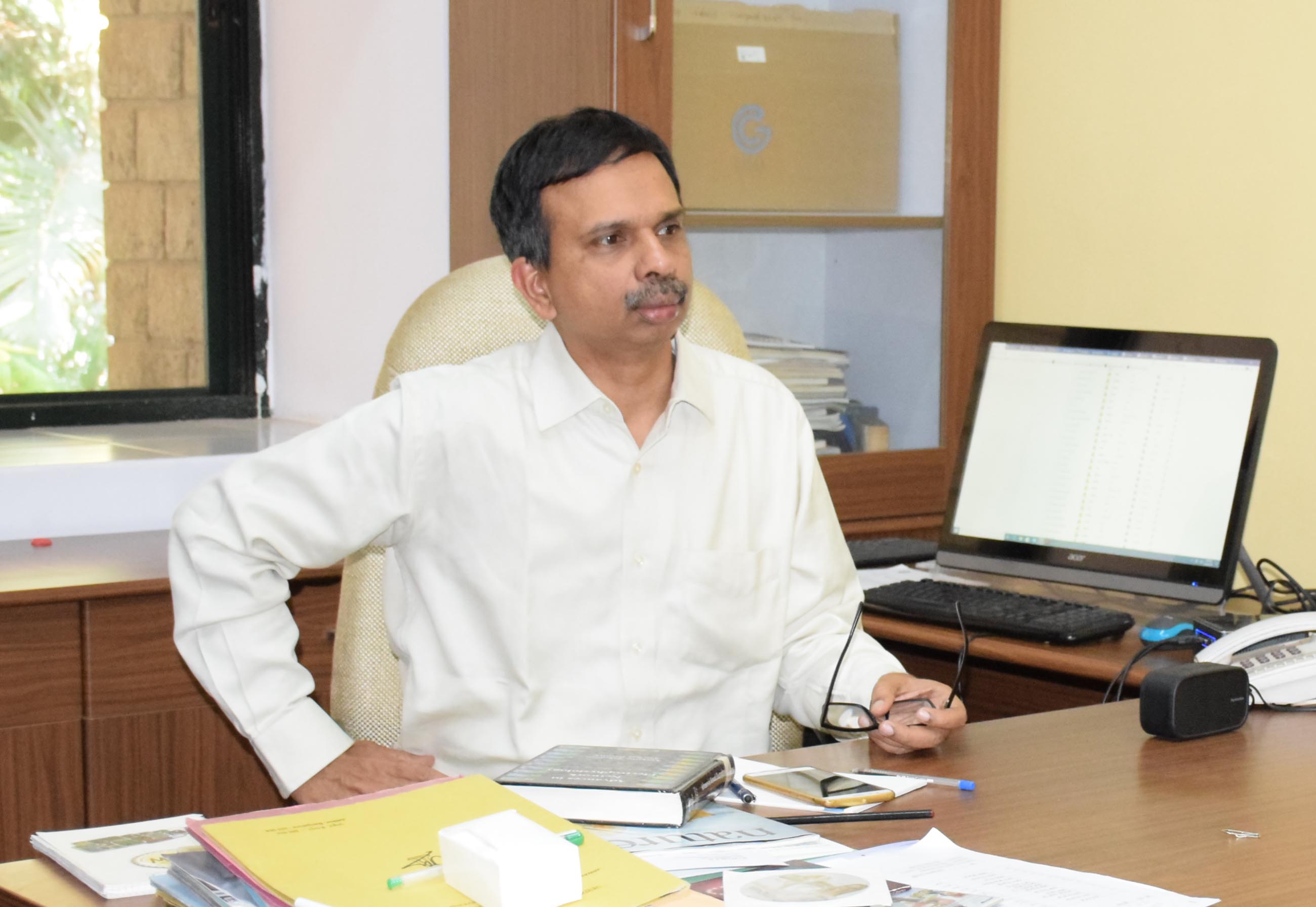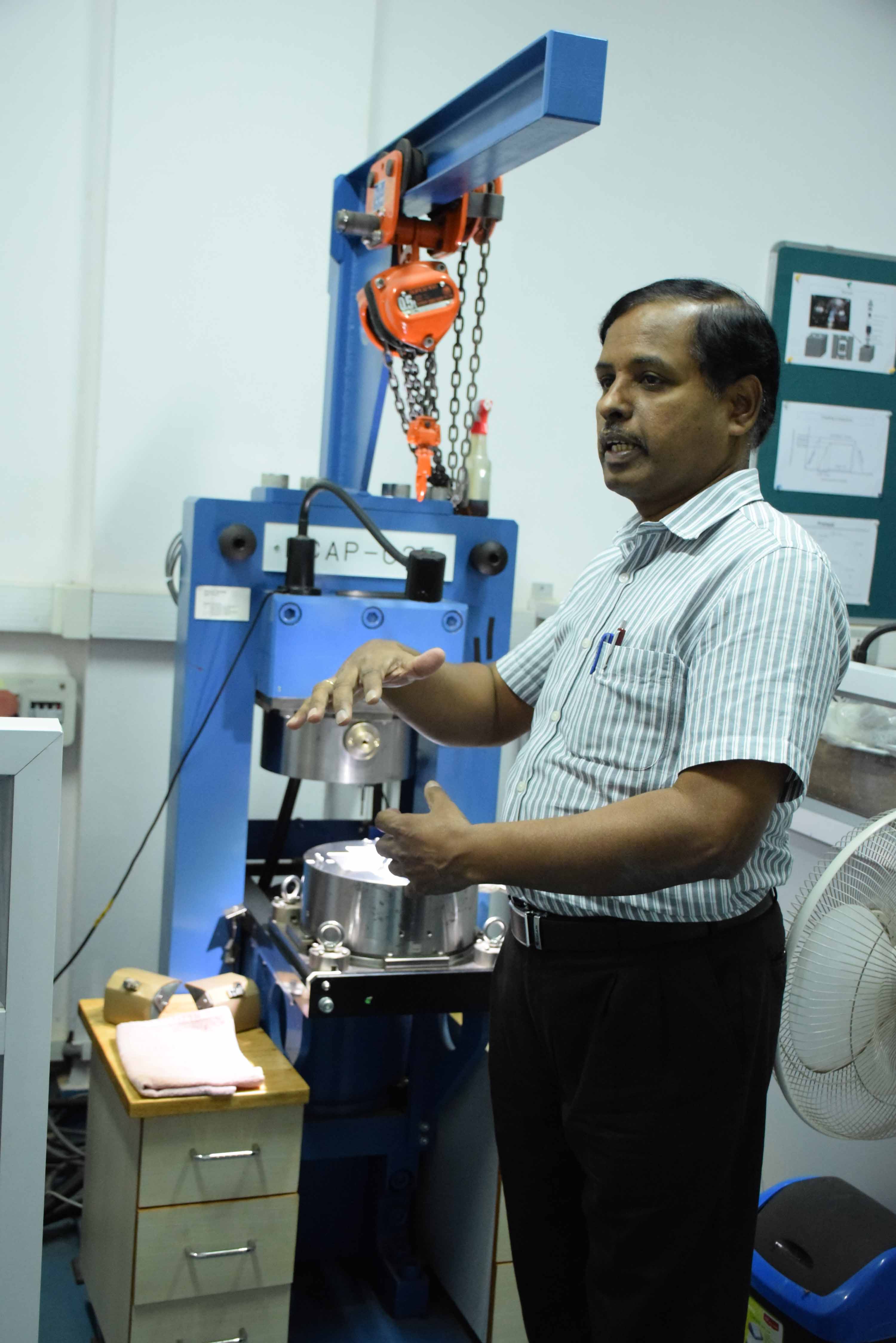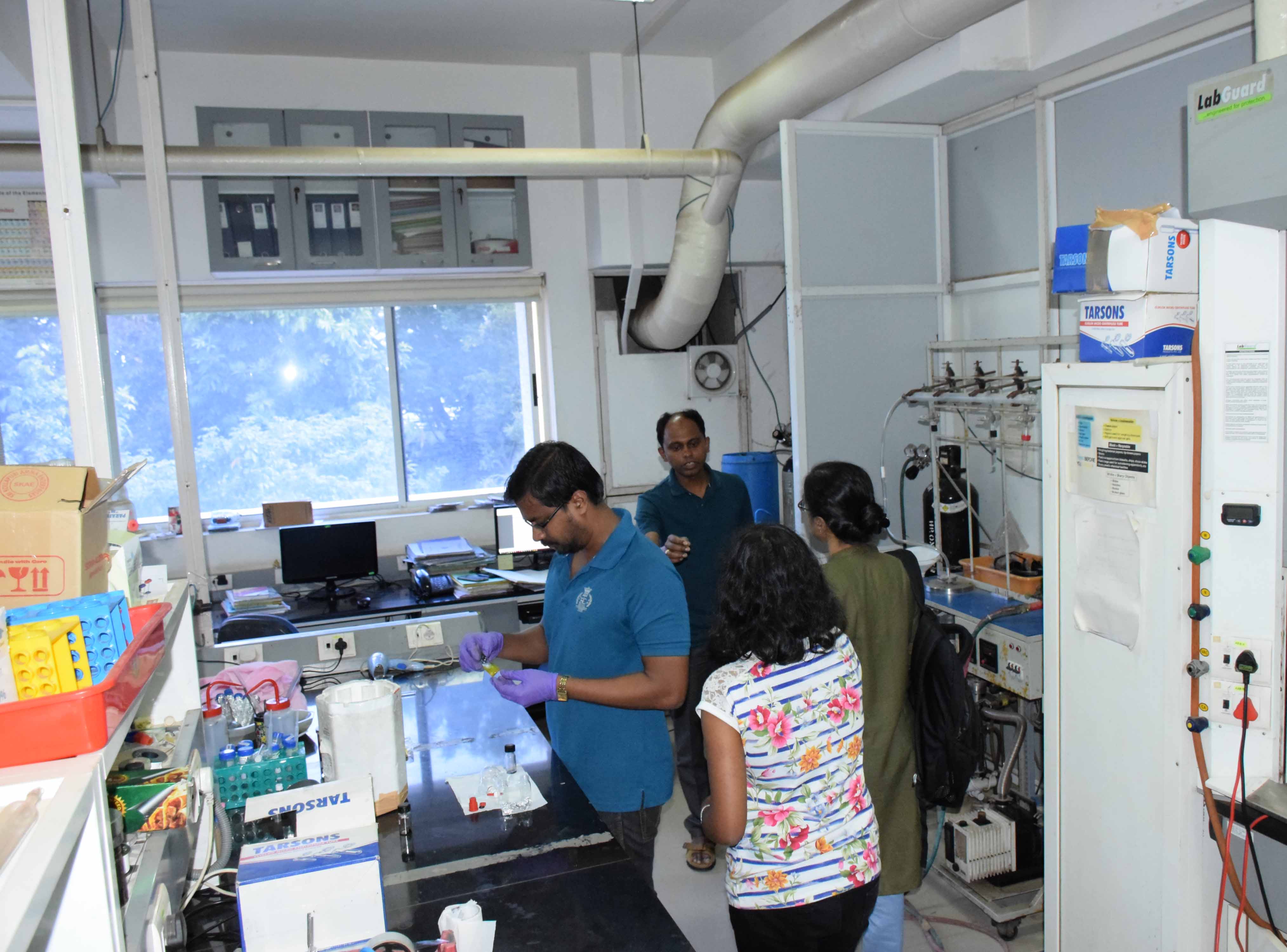The Jawaharlal Nehru Centre for Advanced Scientific Research (JNCASR), the only Indian institution to make it to the 2019 Nature Index Annual Tables, and ranked seventh among the top ten among worldwide academic institutions in 2019, is silently transforming the materials of the future.
Groups of materials scientists including chemists and physicists there are at play, immersed in their eureka moments of finding new materials that are either more efficient catalysts, better semi conductors, better materials to store energy, bio-molecules, nano structured materials and so on. Of Course they are one among the many other groups like molecular biology and genetics unit, evolutionary biology unit, engineering mechanics unit, geodynamics unit and so on. For now we focus only on the materials sciences groups.
Materials that can trigger catalysis for exciting chemical reactions is the passion of Bharat Ratna, Prof. C.N.R. Rao, who is the National Research Professor, Linus Pauling Research Professor & Honorary President at JNCASR. He and his group have recently identified interesting properties of metal phospochloride and borocarbonitrides (BxCyNz) which makes them efficient catalysts—a major breakthrough in the field of catalysis. BxCyNz which specially, constitutes a new class of 2D material, offers great promise as non-metallic catalysts because of the easy tenability of band-gap, surface area, and other electronic properties with variation in composition. Two-dimensional materials, in particular transition metal dichalcogenides (e.g. MOS2) constitute a major area of their study. Properties of nanocomposites of grapheme and other low-D materials, generated by covalent linking are also being examined by them. Generation of oxygen and hydrogen by the oxidation and reduction of water respectively by photochemical means (artificial photosynthesis), solar thermal generation as well as electro catalytic generation of hydrogen are other areas of investigation of the group.

Professor K S Narayan, current President of JNCSR and his team of researchers have interfaced organic-electronic with visual systems. They have developed organic optoelectronic structures as artificial visual elements for a ‘blind retina’. In a recent study they highlighted the efficacy of polymer semiconductors as artificial receptors for interfacing with the visual systems. This research could bring an alternative strategy in the pursuit for solutions to retinal disorder. Interfacing biological systems with electronic components augments the possibility of repairing and restoring various physiological processes. They have also developed a sophisticated imaging method for examining commercial solar panels and probe defects in them.
The team actively pursues development and understanding of Organic-Polymeric semiconducting materials for wide variety of applications in photovoltaic cells, display devices, and embedded sensors. Their research area spans a range of inter-disciplinary fields, which brings in the scope of innovation and novelty in many of the approaches in the laboratory.
Some of the current research activities they are pursuing are in the field of Electronics – with emphasis on Photovoltaics and Field Effect Transistors, Bio-Molecular Electronics, Soft Lithography, Nanodevices and Technology, Development of near field microscopic techniques.
A recent study conducted by Associate Prof Subi Jacob George along with Dr. S. Balasubramanian at the same institution proved that synthetic molecules can grow and be controlled on stimuli similar to biological systems. For this significant finding, the researchers worked on Actin, a protein that frames the contractile fibers of muscle cells. In living system, Actin assembles on its own using its monomer components under the influence of biological fuel Adenosine Triphosphate (ATP). Actin as tiny machine works like a treadmill to support cellular movements.
The scientists have mimicked ATP-selective actin- like self-assembly in the laboratory in a manner very similar to what happens in the natural conditions inside the cells. They could observe monomer subunits undergoing ATP-fuel-driven elongation resembling natural actin self-assembly. Interestingly, when researchers used ATP-hydrolysing enzymes, it prompts actin dissociation. The results of this study have been published in the journal Nature Communications.
Professor George’s group works at the interfaces of organic chemistry, supramolecular chemistry and functional materials. They concentrate on various aspects of molecular assembly of synthetic systems with the ultimate aim of designing bio-inspired materials with dynamic, reversible, self-repairing and adaptive nature. One class of materials they extensively investigate in the laboratory are dynamic supramolecular polymers, where monomers are held together by weak interactions. They investigate the mechanistic aspects of supramolecular polymerization using various spectroscopic and microscopic analyses. More recently, taking cue from the self-assembly of filamentous proteins, they have developed a unique fuel-driven self-assembly approach for the structural and temporal programming of these dynamic materials. Thus they focus on the design of monodispersed and multi-component assemblies by a bio-mimetic living supramolecular polymerization process. In addition, they also target temporally programmed out-of-equilibrium transient materials, by various fuel-driven approaches such as enzymes, chemical reaction and redox processes.

Magneto electric materials for computational purposes is what excites Professor A Sundereshan. Focused on solid-state chemistry and physics, his research group synthesizes and characterizes various inorganic transition metal oxide materials, in the form of thin films, which are of both academic and technological interest. His dream is to find a material which shows promising magneto-electric properties at room temperature.
His experimental techniques involve solid state and chemical route of synthesis, structural characterisation by x-ray and neuron diffraction and physical property measurements such as magnetic, electrical transport, and ferroelectrics. The aim is to correlate the structure and properties so that a material with required property may be achieved. The current focus of research is exploring new linear magneto-electric and multi-ferroic materials. They have discovered several new magneto-electric and multi-ferroic materials in the recently years. This work also involves magnetic structure determination using neutron diffraction
Associate Professor T Govindaraju’s research interests are at the interface of chemistry, biology and biomaterials science. Alzheimer’s disease (AD) constitutes 70-80 percent of all neurodegenerative diseases, for which there is no diagnosis or cure. His group developed NIR-fluorescence tools for selective detection and differentiation of AD from tauopathies and other neurodegenerative diseases in case of mixed dementia. Molecular probes developed to assess metals, ROS, oxidative stress and other core and indirect biomarkers for possible multiplexed and multimodal detection of AD. Multifunctional lead drug-candidates developed for multifaceted toxicity of AD. Many of his laboratory inventions are commercialized or licensed to develop bio-imaging and point-of-care diagnostics. They have introduced novel concept of ‘molecular architectonics’ to integrate the realms of molecules to Nano architectonics to functional applications (bioelectronics, homochirality, protein folding, high-strength biomaterials, self-cleaning biosensors & tissue engineering) and established the concept of ‘templated DNA nanotechnology (functional DNA Nano architectonics)’ to overcome the limitations of DNA nanotechnology, for practical applications. Silk, silk-melanin and its biomimetic-based scaffolds are fabricated for skeletal muscle and stem cells-based neuronal tissue engineering among other biomedical applications. His group is also leading the efforts towards ‘upcycling cyclic dipeptides (CDPs)’ as novel modular building blocks for the synthesis of peptide-mimetics and biomimetics.
In order to combat infectious diseases in a multipronged approach, namely, diagnosis, prevention and treatment, Associate Professor Jayanta Haldar’s group seeks to provide a platform to integrate organic chemistry and material science with biology. Their research focuses on fundamental understanding of material- pathogen interaction and development on innovative strategies that will provide solutions in tackling infections. The group is involved in creating novel antimicrobial agents for the prevention and treatment of infectious diseases and combating the emergence of antimicrobial resistance. Additionally, they are interested in developing nanotechnology based smart drug delivery systems for addressing nonspecific action and toxicity related issues of existing drugs for infectious diseases. Specific research interest in the group includes antimicrobial therapeutics (glycopeptides, tetracycline and synthetic mimics of antimicrobial peptides, re-sensitization of obsolete antibiotics and so on), smart drug delivery system (hydrogel, liposome and dendrimer) and antifouling materials (based on polymers or polymeric-inorganic nano-composite).
Associate Professor Sebastian C. Peter and his group’s research interests include design and development of solid-state inorganic materials for various applications ranging CO2 reduction, water splitting, hydrogen evolution, fuel cell, electrochemical sensors and condensed matter physics. With 135 peer reviewed publications and five patents and wide range of facilities available for the synthesis of bulk compounds as well as for the growth of single crystals. The group is trying to address environmental issues by reducing anthropogenic carbon dioxide through thermochemical photochemical and electrochemical routes resulting in the production of fuel cell and chemicals for various applications. In 2018, Dr. Sebastian Peter and the team entered into the final round of the 20 million US Dollar NRG COSIA Carbon XPRIZE (only one team from India) and was selected among 47 teams across the globe for the development of catalysts for conversion of CO2 into chemicals and fuels using combined information obtained from experiments and first-principles calculations. The team has been selected as one of the best start-ups by ONGC and Karnataka State Government.
The group led by Associate Prof Ranjani Vishwanatha is involved in designing undoped and transition metal doped semiconductor and semiconductor-metal hybrid nanocrystals of sizes ranging from 3 nm to 50 nm and studying their electronic structure through a variety of spectroscopic and microscopic tools ranging from fluorescence, transient absorption to X-Ray absorption fine structure spectroscopy. The group is known to design novel synthetic strategies bases on wet chemistry to produce quantum dots of required shape, size and morphology through which we pursue their optical, magnetic and magneto-optical properties. Current interest of the group ranges from understanding the role of ligands in surface passivation of quantum dots, role of trap states in their luminescence property to engineering II-VI core-shell nanocrystals for studying interfacial magnetism and making doped all-inorganic lead halide perovskite nanocrystals for extraordinary luminescence property. Recently, they started investigating the oxidation state of dopant in various II-VI semiconductors through single molecule fluorescence spectroscopy, magneto-optical effect of doped semiconducting nanocrystals, and the possibility of lead free all-inorganic perovskite nanostructure for application in LED and solar cell.

Kanishka Biswas, Associate Professor and his team of scientists have synthesised a new material, Silver Copper Telluride (AgCuTe), a compound of three elements, Silver, Copper and Tellurium, that conducts of electricity but not heat thereby saving energy lost as heat in the process of its conversion. Biswas says this property is due to the unique structure of the new compound. While electrons are free to move around ensuring electrical conductivity, the lattices of Tellurium are unusually rigid. The lattices of Silver also vibrate very slowly, thereby, inhibiting the conduction of heat. It is thus a good candidate for exploiting thermo-electric effect. The team’s work has just been published in the chemistry journal, Angewandte Chemie.
His group is focused on solid-state inorganic chemistry of nanostructured metal chalcogenides and zintl compounds and investigations of their thermoelectric properties. They explore materials, which, by the virtue of unique structural topology, exhibit intrinsic glass-like thermal conductivity and crystal like electrical conductivity, n-p type structural phase transitions and other interesting phenomena. Their research interest is also to look into the electronic and phonon structure of topologically non-trivial quantum materials and therefore optimization of their thermoelectric properties. Biswas’s group pursue studies on structural evolution (local and global), phase transitions and local structural disorder un bulk or nano metal chalcogenides by various techniques such as synchrotron X-ray diffraction and pair distribution function (PDF) analysis. Recently, his group is pursuing the fundamental solid state chemistry on halide based perovskites and other structures. Apart from solid-state chemistry, research interest of the group is also focused on soft-chemical solution phase synthesis, growth and novel property studies of various 2D layered materials. Biswas’s group also develops novel layered chalcogenides for efficient removal of dissolved contaminants from water in ppb level. They have significant interest in dielectric charge storage and ferroelectric transitions.
The theme of Faculty fellow Sarit S. Agasti, is molecular recognition in synthetic system via supramolecular interactions which constitute: fundamental studies and applications in biology and materials. Their primary design relies on two types of molecular systems, macrocyclic host-guest and DNA. They employ concepts of molecular recognition in these systems to engineer molecules and materials to address challenges in various areas of biology and materials science, including bioimaging, sensing, and drug delivery as well as programmable and adaptive materials.
Faculty Fellow Premkumar Senguttuvan and his group focus on the developments of Na-ion and multivalent-ion intercalation electrodes using various synthesis routes. They use in-situe/in-operando techniques to follow the reaction mechanisms.
As these groups of materials scientists dream of new materials they toy with their physical and chemical properties to tailor and optimize them for emerging applications in energy, environment, health, sensing and communication technologies.






























